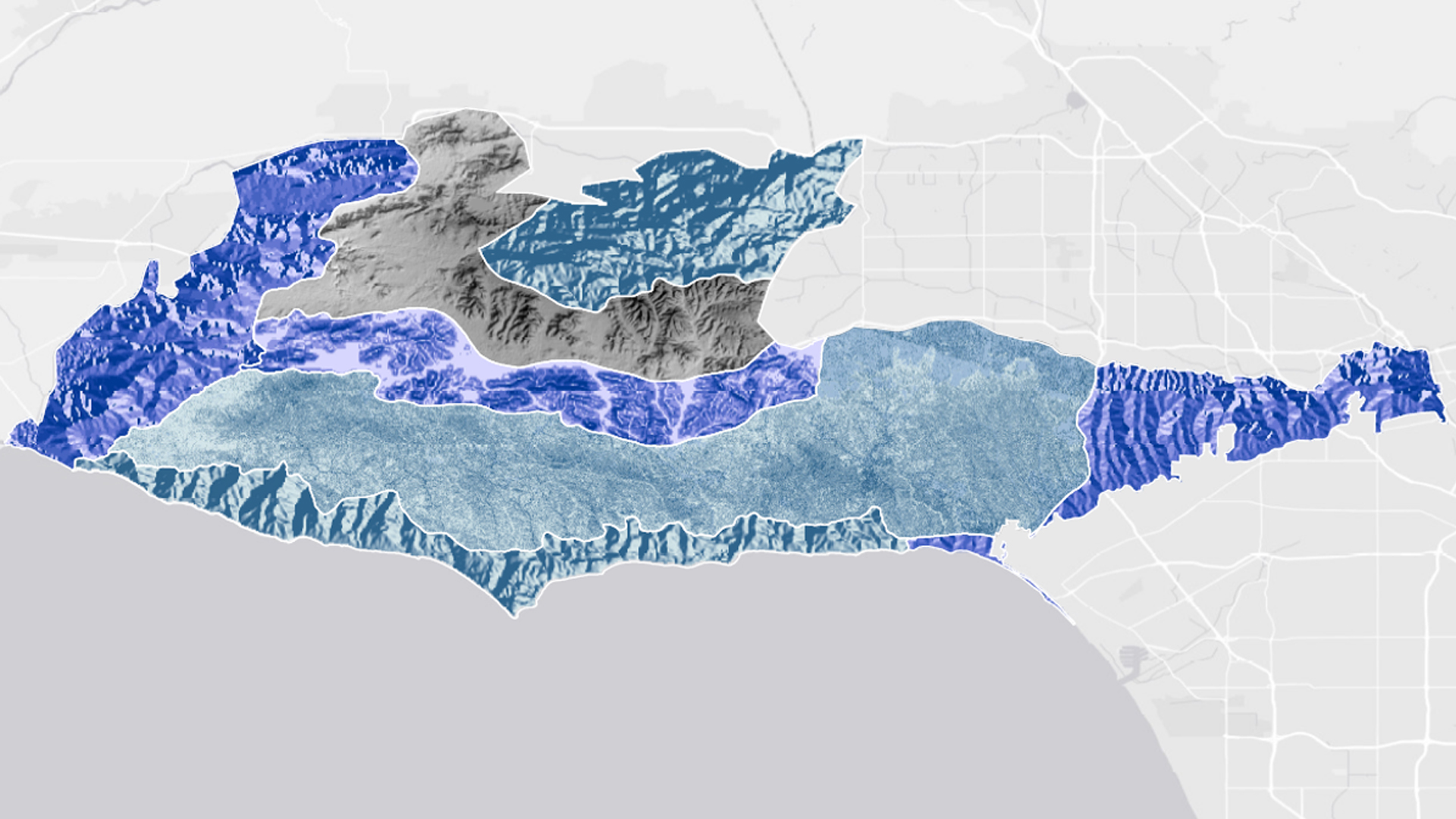Santa Monica Mountains Ecological Forecasting II

Utilizing NASA Earth Observations to Determine Drought Dieback and Insect-related Damage in the Santa Monica Mountains, California
The Santa Monica Mountains (SMM) lie between the city of Los Angeles and the San Fernando Valley, California, enduring as a steadfast haven for native vegetation, wildlife, and recreational activities. Both public and private conservation agencies have secured protection for much of the mountain range, however the severe California drought from 2011-2017 had a major impact on vegetation, including 11,000 acres of oak woodlands. The fall Santa Monica Mountains Ecological Forecasting II project explored how and why vegetation has changed from 2013-2017, a continuation study from the spring term that further investigated the effect of climate, harmful beetles, and varying topography on dieback. The heavy rains of the 2016-2017 winter allowed our team to investigate initial response to post-drought conditions. The team used ER-2 Airborne Visible Infrared Imaging Spectrometer (AVIRIS) imagery, climate data, digital elevation models, and in situ beetle and oak data to analyze the extent of vegetation loss over the course of the drought, including which areas will be most vulnerable to drought in the future. The results from these analyses will help the Resource Conservation District of the Santa Monica Mountains determine how to focus efforts towards regaining oak woodland vigor.
Project Video:
Oaks: Getting Quercky
- Location
- California – JPL
- Term
- Fall 2017
- Partner(s)
- Resource Conservation District of the Santa Monica Mountains
National Park Service, Santa Monica Mountains National Recreation Area
California Department of Parks and Recreation, Los Angeles District
California Department of Forestry and Fire Protection (CAL FIRE)
County of Los Angeles Fire Department, Prevention Services Bureau, Forestry Division
University of California, UC Cooperative Extension - NASA Earth Observations
- SRTM
ER-2, AVIRIS - Team
- Kelsey Foster (Project Lead)
Ariana Nickmeyer
Nick Rousseau
Natalie Queally - Advisor(s)
- Natasha Stavros (NASA Jet Propulsion Laboratory, California Institute of Technology)
- Project Materials Poster PDF